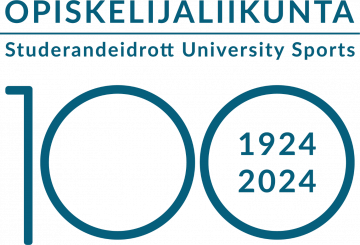OLL’s strategy 2024–2028: Towards a university on the move – together!
Federation's long-term guiding document.
Foundations of the strategy
Our main purpose is to promote the wellbeing and ability to study of university students through exercise.
Vision 2028: Universities on the Move is growing stronger at all Finnish universities and in the daily lives of university students, and the Federation is a recognised expert in university sports and a sought-after partner.
Our values:
- Together: We will improve Universities on the Move in collaboration with our members and the universities, as well as with organisations, public administration and other parties who promote university sports and the ability to study.
- Responsibly: The guiding principle for our work is ecological, financial and social responsibility, which we will constantly develop within our work, and which we also expect from our partners.
Our strategic choices
1. We will gather the strength of the higher education field and strengthen Universities on the Move with the help of the new membership model.
- We will invite universities to become full members of the Federation alongside the student unions and proactively offer them membership. Throughout the strategy period we will be making the required rule changes and develop our membership step by step as new members join. In the first phase we will create a new membership category and strengthen the Federation’s student leadership. In later phases we will make the required updates to the Federation’s brand and mode of operation in collaboration with our current and new members.
- We will make membership attractive and lucrative by directing our activities and their benefits primarily to our members. We will create a programme of training services and network activities which serves our members, acquire new nationwide members’ benefits, and improve our advocacy and membership communications to make them more effective. We will make the Finnish Student Championship events more accessible by lowering the threshold for participation while also offering opportunities for goal-oriented athletes.
- We will gain more influence and resources for our work through collaborations and financial partnerships. We will improve the Federation’s finances with the help of the outlines in the medium-term financial plan. The goal is that the membership fee can be reduced when the new membership model increases membership revenue.
- We will use three key performance indicators to measure the success of this strategic choice:
1) the Federation’s membership and representation: new members join the Federation and nationwide representation improves,
2) member satisfaction: we will monitor satisfaction through event-specific and annual surveys,
3) degree of participation: as many member organisations as possible take part in our activities and events.
2. We will lobby to help achieve the recommendations for university sports.
- We will work with our members and partners to influence legislation, funding and the work of the universities in order to achieve the recommendations for university sports throughout Finland. Our main goals are to 1) increase the number of students who exercise enough and reduce students’ daily time spent sitting, and 2) improve the equality, accessibility and student satisfaction of university sports. We will also develop Universities on the Move through a university system which has a positive attitude towards top-level athletes. We will increase opportunities for free sports.
- We will increase collaboration between different parties with the help of our networks and partnerships. We will also strengthen Universities on the Move with the help of mental health experts. In the international university sports field we will lobby for low-threshold sports and responsibility.
- We will use three key performance indicators to measure the success of this strategic choice:
1) achieving the recommendations in the universities: using the Universities on the Move scorecard as a data source,
2) the amount of movement and sitting: using the Finnish Student Health and Wellbeing Survey as a data source,
3) satisfaction with university sports: using the Student Barometer study as a data source.
Page last updated 18.4.2024

